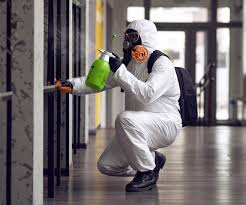
The Importance of Professional Mold Inspection Before Remediation
Mold is a tricky problem that can creep into our homes. When dealing with mold, essential steps need to be followed, and one of the most vital ones is a Professional Mold Inspection. This article will explore why Professional Mold Inspection is a crucial first step before mold removal or remediation. Understanding mold and having an expert assess the situation can make a significant difference in creating a healthy and safe environment for you and your family.
Process of Professional Mold Inspection
Mold inspection is crucial in maintaining a safe and healthy building environment. MMI Home Improvement is your top choice for Mold Removal and Remediation in Norcross. We’re here to help you with a problem that can affect your home. Mold can be harmful, but don’t worry, we have the solution. Professional mold inspectors play a vital role in this process. Let’s explore the steps they follow.
1. Preparing for the Inspection
Before starting the inspection, the professional mold inspector gathers essential tools and equipment, such as a flashlight, moisture meter, and a camera.
2. Visual Inspection
The inspector carefully examines the areas where mold may grow, like basements, bathrooms, and attics. They look for any visible signs of mold, like black spots or fuzzy patches.
3. Checking for Moisture
Mold thrives in moisture, so inspectors use moisture meters to find areas with high humidity or water leaks. These are places where mold might be hiding.
4. Air Quality Testing
The inspector collects air samples to test for mold spores. They use a special machine to gather these samples, which are later analyzed in a lab to determine mold levels.
5. Surface Sampling
In some cases, the inspector may need to take samples from surfaces that could be contaminated. These samples also get analyzed in a lab for mold identification.
6. Analyzing Results
After gathering samples, the inspector waits for lab results. They interpret the data to determine the type and amount of mold present.
7. Reporting and Recommendations
The inspector provides a detailed report to the property owner, including findings, mold type, and potential health risks. They also offer recommendations for mold removal if needed.
8. Preventive Measures
Inspectors often suggest steps to prevent future mold growth, like fixing leaks, improving ventilation, or using dehumidifiers.
9. Post-Inspection Cleanup
If mold removal is necessary, the inspector ensures that the area is properly cleaned and mold-free. This is a crucial step to maintain a safe environment.
10. Follow-Up Inspection
Sometimes, the inspector may return for a follow-up inspection to ensure the mold removal was successful and that preventive measures were implemented.
Professional mold inspection is a systematic and thorough process that helps ensure indoor spaces remain safe and healthy. By following these steps, mold inspectors assist in identifying, addressing, and preventing mold issues. This is essential for maintaining a clean and safe environment for everyone.
Learn How to Repair Holes In HVAC Ducts- Complete Guide.
Benefits of Professional Mold Inspection Before Remediation
Before getting rid of mold, it’s essential to have professionals inspect it. Mold can be a tricky problem, and knowing what’s going on is essential. Let’s explore why a professional mold inspection is necessary.
1. Accurate Assessment:
Professional mold inspectors are trained to spot mold, even in hidden places. They use special tools like moisture meters and infrared cameras to find mold you might miss. This ensures an accurate assessment.
2. Identifying the Type of Mold:
Not all molds are the same. Some are harmless, while others can be harmful to your health. Professionals can identify the type of mold, letting you know if it’s a concern.
3. Determining the Extent of the Problem:
Mold can spread quickly, even if you can’t see it. Professionals can assess how far the mold has spread, preventing it from coming back after remediation.
4. Health and Safety:
Mold can be harmful to one’s health, especially if they have allergies or respiratory difficulties. A professional inspection guarantees that all mold is discovered and eradicated, hence lowering health concerns.
5. Avoiding Future Problems:
If mold is removed without a thorough inspection, it may reappear. Professionals can identify the source of the moisture that is creating the mold, allowing you to prevent further growth.
6. Insurance Claims:
While certain insurance plans may cover mold treatment costs, professional inspections are frequently required. Documentation from a mold examination can assist you with your insurance claim.
7. Cost-Effective:
Although it may appear to be an additional expense, professional mold inspection can save you money in the long term. It saves money that would otherwise be spent on ineffective mold removal.
8. Peace of Mind:
Knowing that mold has been fully investigated in your home by professionals can bring you peace of mind. You can be confident that your home is safe and mold-free.
9. Legal Requirements:
Professional mold inspection is a legal obligation in some locations prior to remediation. Failure to follow these regulations may result in sanctions.
10. Improved Air Quality:
Mold can have an impact on the air quality in your home. Professional inspection and removal result in better indoor air quality, which benefits your overall health.
A professional mold inspection is required prior to mold remediation. It ensures an accurate assessment, identifies the type of mold, and quantifies the scope of the problem. This not only protects your health but also prevents future mold problems. Additionally, it can be cost-effective, help with insurance claims, and ensure legal compliance. Ultimately, it provides peace of mind and better indoor air quality, making your home safer and healthier.
Read more about: Watts Air Conditioning, Inc. Announces Top-Notch AC Repair Services in Poinciana


